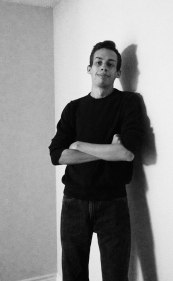SUMMARY
Role
Level Artist
Intention (SMART Goal)
By Jan. 28 as part of team #4, I will have completed Brackeys‘ tutorial on how to make your first video game in order to understand the basics of how to create a very basic level design for my team
PRE-PRODUCTION – INQUIRY
Leader(s) in the Field / Exemplary Work(s)

What I like about Andrew is that he is pretty experienced. He has made a lot of games, one of them being Paladins, Smite Adventures, and Realm Royale. He has also worked for some companies, some being Hi-Rez Studios and Digital Extremes
Training Source(s)
1:18 Level Designing is not just about the blocks. You have to understand the pacing of the game, the combat, the puzzles, and the ways you gonna be moving around the map and
1:41 It is important that the level artist understands to with works his team in order to make the right choice of objects and storyline and location.
The level artist should make a blocking (in our case that’s the minimal viable product) that meets everyone’s expectations, then add finer details like the store location, objects, etc.
Later on, the Level artist can then test the pacing of the game
3:29 Before making your world you should study your environment and look at reference images as well as concept arts.
Communication is important. You have to share your ideas but also listen to your team. Those are the open windows for improvement on your level design
Project Timeline
MVP
- Basics obstacles in the garage (week one)
- Car
- Trash can
- Tool kit
- Fridge
- Welcome mat
- Bike
- Enemies (three) week one
- Black background and character out-glow
Proposed Budget
Around 2-3 weeks will be needed. Week 1 for coming up with ideas, week 2 for MVP, and week 3 for final the product.
PRODUCTION – ACTION
The (FILM, SOUND, or GAME Creation)
Skills Commentary
POST-PRODUCTION – REFLECTION
21st Century Skills
Ways of Thinking (Creativity, Innovation, Critical Thinking, Problem Solving)
My goal was to learn to create an isometric level (technically speaking). I both failed and was successful with that. I ended up creating a level that had a combination of 2d, platform and some sort of isometric view. I think it makes it unique.
Ways of Working (Communication & Collaboration)
I didn’t really need that much communication with the team, because unlike most of my projects, this time I barely coded the game and only did level design.
Tools for Working (Info & Media Literacy)
I used Google Images a lot to for tracing and perspective. This image specifically was very useful.

Ways of Living in the World (Life & Career)
I think that I really learned to be a little outgoing. I wanted to stick to coding a little more, but now I want to do a little more of both with the 3d Construct 3 mode.
Reactions to the Final Version
“I really like your art style” – Nate
Self-Evaluation of Final Version
I personally impressed myself. I think I’ll be able to do better with my next project.
What I Learned and Problems I Solved
I made a lot of mistakes because I was just learning. Sometimes I would use the wrong perspective on objects, or have to restart because I forgot to save the project. Fresh starts are good sometimes. It’s like playing going to level 1 after playing level 100. You have already learned a lot from 100 so now you can do things quicker and more efficiently.
Grammar and Spelling
Odin & Edu Blogs’ built in grammar checker.
Editor
Odin